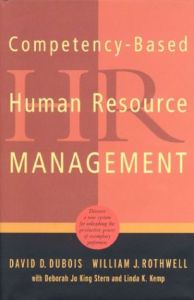Join getAbstract to access the summary!

Join getAbstract to access the summary!
David D. Dubois, William J. Rothwell, Deborah Jo King Stern and Linda K. Kemp
Competency-Based Human Resource Management
Discover a New System for Unleashing the Productive Power of Exemplary Performers
Davies-Black Publishing, 2004
What's inside?
Focus your human resource management on competencies.
Recommendation
Traditionally, human resources departments and organizations have existed to fill jobs and manage the people who do jobs. Authors David D. Dubois and William J. Rothwell suggest a different approach: recruiting and managing competencies instead. The distinction is important, the authors say, because thinking of an organization as an aggregation of jobs makes it difficult to change quickly in response to new opportunities and threats. Much of what the authors suggest is plausible; some of it is even persuasive. On the other hand, their guide is as much an academic text as a manual for corporate use. Multiple references to other sources and dense definitions impede the clear path to practical, actionable advice. In that quest, the reader is grateful for the authors’ useful planning tools, checklists, worksheets and other task-related aids, which compensate for the jargon and repetition. While wishing for a slightly less academic approach, getAbstract.com recommends this innovative take on human resources management to those staying abreast of changes in the field.
Summary
About the Authors
David D. Dubois, Ph.D., L.P.C., is a consultant, author, counselor and workshop leader specializing in competency-based human resource management. His consulting clients have included Federal Express and Ford Motor Company. He is the author of Competency-Based Performance Improvement. William J. Rothwell, Ph.D., SPHR, is president of Rothwell & Associates, Inc., and professor of human resource development at Pennsylvania State University.





















Comment on this summary